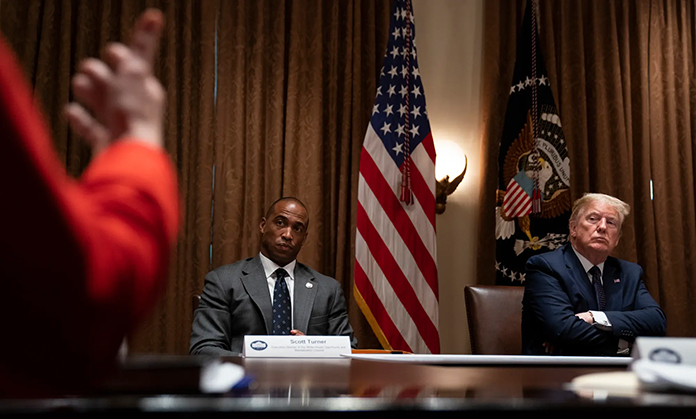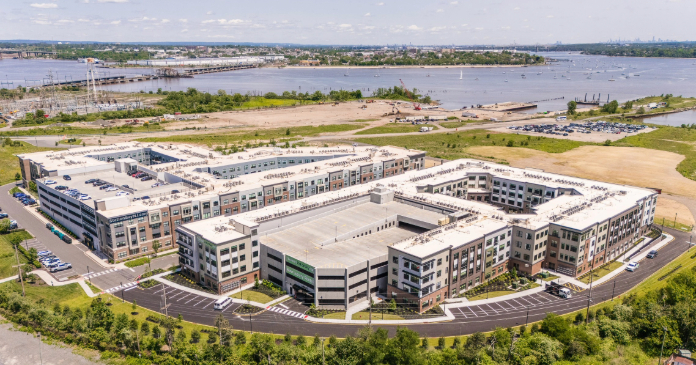The discovery of accounting frauds at the nation’s two largest GSEs (Government Sponsored Enterprises), Freddie Mac and Fannie Mae by regulatory agencies and the SEC has lead to shakeups at both institutions, calls for tighter regulation and increased criticism of the immense roles both play in the housing market and the economy.
Many fear the scandals could rock the foundation of the financial end of the housing industry and produce drastic ripple effects at the development and consumer levels.
Between Fannie Mae and Freddie Mac, the two federally-chartered financial megaliths hold or guarantee almost half of the nation’s $8 trillion in residential mortgages. The two entities were established by Congress to facilitate a strong secondary market for mortgage loans, freeing up capital to expand home-ownership. Both were also chartered with mandates to support and further development of affordable housing throughout the nation.
Perhaps the more powerful of the two is Fannie Mae, considered the world’s largest non-bank financial services company and is the nation’s largest source of financing for home mortgages. Since 1968, Fannie Mae has $6.3 trillion of mortgage financing for 63 million families.
In 2003, Freddie Mac’s accounting scandal and failure to report $5 billion in profits lead to the departure of its four top executives and $125 million in fines.
In late December, Fannie Mae’s Chairman and Chief Executive officer Franklin D. Raines and Vice Chairman and Chief Financial Officer J. Timothy Howard resigned from their posts following announcement by the SEC of its investigation into accounting irregularities at Fannie Mae. The SEC ordered Fannie Mae to restate its earnings for the past four years. In addition, Fannie Mae faces more stringent regulation from the Office of Federal Housing Enterprise Oversight.
The Mortgage Bankers Association (MBA) endorsed new legislation introduced in the Senate to improve oversight of housing GSEs.
“MBA has long supported legislation to ensure effective and well-funded regulatory oversight of the GSEs, which are critical to ensuring a healthy housing finance system,” said Kurt Pfotenhauer, MBA’s senior vice president of government affairs. “We commend Senators Hagel, Sununu, and Dole for introducing the Federal Enterprise Regulatory Reform Act of 2005, and encourage the Senate banking Committee to act quickly to advance this bill.”
Pfotenhauer added: “This legislation draws a needed bright line between the primary and secondary markets which will empower the regulator to keep Fannie and Freddie focused on their mission.”
FALL FROM GRACE
Raines, who was with Fannie Mae since 1991 and became Chairman and CEO in 1999, was the first African-American CEO of a Fortune 500 company. His resignation stunned the financial community although many anticipated it.
In announcing his departure, Raines said, “I previously stated that I would hold myself accountable if the SEC determined that significant mistakes were made in the company’s accounting. Although, to my knowledge, the company has always made good faith efforts to get its accounting right, the SEC has determined that mistakes were made. By my early retirement, I have held myself accountable.”
Daniel H. Mudd, vice chairman and chief operating officer of Fannie Mae, will serve as interim chief executive officer and Executive Vice President Robert Levin will serve as interim chief financial officer.
Both Fannie Mae’s and Freddie Mac’s aggressive pursuit of market dominance and profit caused many observers to question if the two GSEs had forgotten the basis of their government charters and needlessly imperiled the financial housing market by their actions. Both entities had falsified earning reports in order to look good to shareholders and to increase executive bonuses tied to profitability.
Others question how far the fallout from punitive actions against Fannie Mae and Freddie Mac will spread and what impact it will have on the housing market and the economy.
As a result, government officials and industry leaders have called for the privatization of Fannie Mae and Freddie Mac. Federal Reserve Chair Alan Greenspan has made no secret of his view on Fannie and Freddie, stating that they presented a “systemic” risk to the nation’s financial system. Greenspan has advocated privatizing the two GSEs.
What is the likely impact of a major fallback in Fannie and Freddie’s activities in the market? The answers, according to experts, vary from minimal to catastrophic. Theoretically, the impact of the two GSEs sharply curtailing their balance sheets could spin the housing and financial markets into a downturn and raise mortgage rates.
Considering that between the two, Fannie and Freddie own or guarantee almost half of the $7.9 trillion in the nation’s housing mortgage market. Add to that the billions of dollars in debt issued by the two companies either directly or through mutual and pension funds and you can see the enormous impact the two organizations have on the fundamental soundness of the financial marketplace.
Analysts believe it is more likely that Fannie and Freddie will be forced to reduce the scope of their mortgage holdings and put more capital into mortgage-backed securities.
Richard J. Campo, chairman and CEO of Camden Property Trust, said, “I don’t see serious impact from the accounting issues as they don’t affect program policy. The bigger issue at stake is whether Fannie Mae meets and expands its mandate to support affordable housing. They dominate the market and certainly affect it, but closer supervision by regulatory agencies should remedy any misdirection without too many repercussions. Public scrutiny has become a corporate way of life.”
FANNIE MAE AND MULTIFAMILY
In 2004, Fannie Mae multifamily and its lender and housing partners invested $21.2 billion in multifamily housing. Fannie Mae’s multifamily financing solutions include debt financing through lender partners and investments in Low Income Housing Tax Credits (LIHTC) through syndication partners.
“Although there was an abundance of capital in multifamily markets and increased competition from conduits in 2004, Fannie Mae maintained its sound underwriting guidelines and delivered a strong performance,” said Richard Lawch, senior vice president of Fannie Mae’s Multifamily division. “Fannie Mae’s lenders and housing partners are prepared to provide even more units of affordable rental housing in 2005.”
Nearly 90 percent of the multifamily units financed by Fannie Mae in 2004 are affordable to families at or below the median income of their communities. Approximately 54 percent of all multifamily units were reserved for special affordable (low- and very-low income units), and 45 percent of all loans were made in under served markets and areas. Fannie Mae committed a record $1.7 billion in multifamily equity investments that qualify for LIHTC, maintaining its position as the largest investor in LIHTCs.
Fannie Mae Delegated Underwriting and Servicing (DUSTM) lenders delivered $16.2 billion of the total multifamily financing issued in 2004. An additional $1.9 billion in debt financing was generated by MFlex® lenders, who typically finance small multifamily developments.
In addition, Fannie Mae’s multifamily assets, comprised of multifamily mortgages purchased for cash, multifamily Mortgage-Backed Securities (MBS), investments in LIHTC, and others, now total $119.9 billion.
Fannie Mae is the largest private-sector provider of multifamily financing for affordable and market-rate rental housing in America. Its current multifamily portfolio is $113 billion.
FANNIE MAE UNDER FIRE
Despite these daunting statistics spewing from Fannie’s well-oiled PR machine, a number of credible studies — including ones conducted by HUD and the GAO (government accounting office) — find Fannie Mae deficient in its pursuit of low income housing loans, instead amassing a portfolio heavily dominated by market rate properties.
Other critics have taken Fannie Mae to task for its hyper-aggressive lobbying and self-promotional tactics, and more than one commentator has called the company arrogant and self-serving. A different perspective views the events at Fannie Mae a political skirmish between the Republican Administration and Fannie Mae, a product of the Democrat’s and Roosevelt’s New Deal from the Depression era. Raines, a lifelong Democrat, had served as budget director in the Clinton Administration.
Whether there is a significant or lasting impact on the multifamily industry from the changes at Fannie Mae and Freddie Mac remain to be seen. Following in the wake of Enron and WorldCom, these two scandals deepen mistrust of large corporations and may result in a major revamping of the way business is governed and overseen in the future.
















